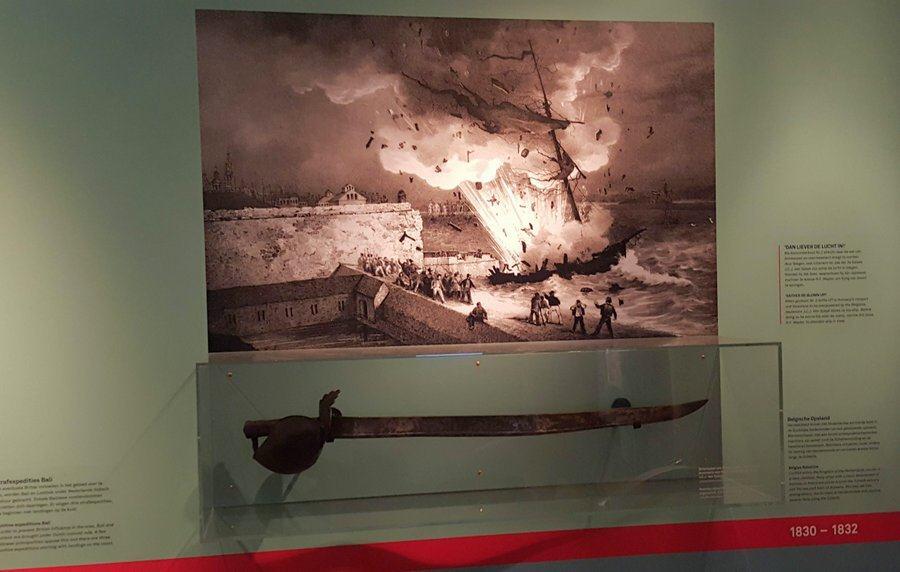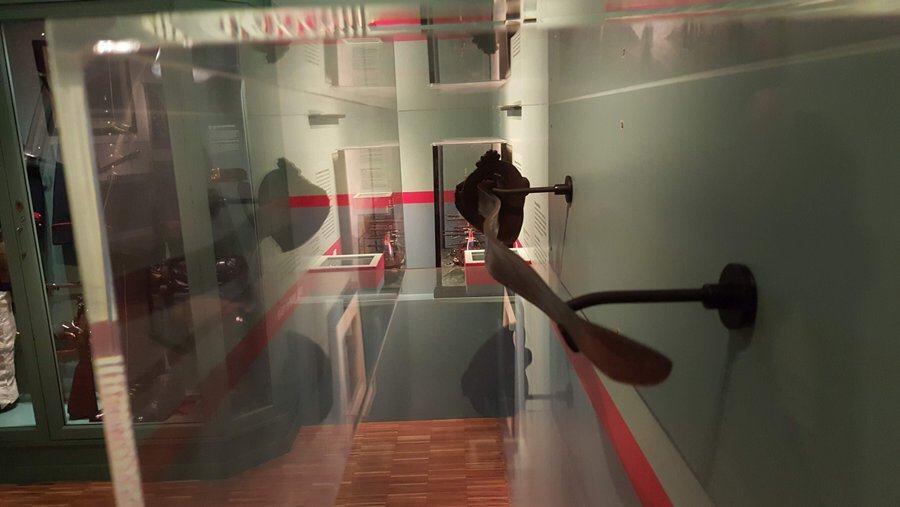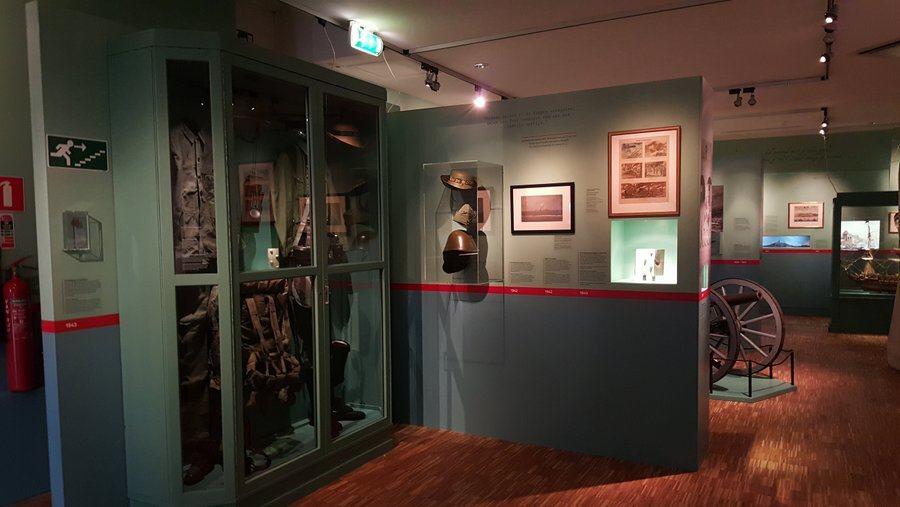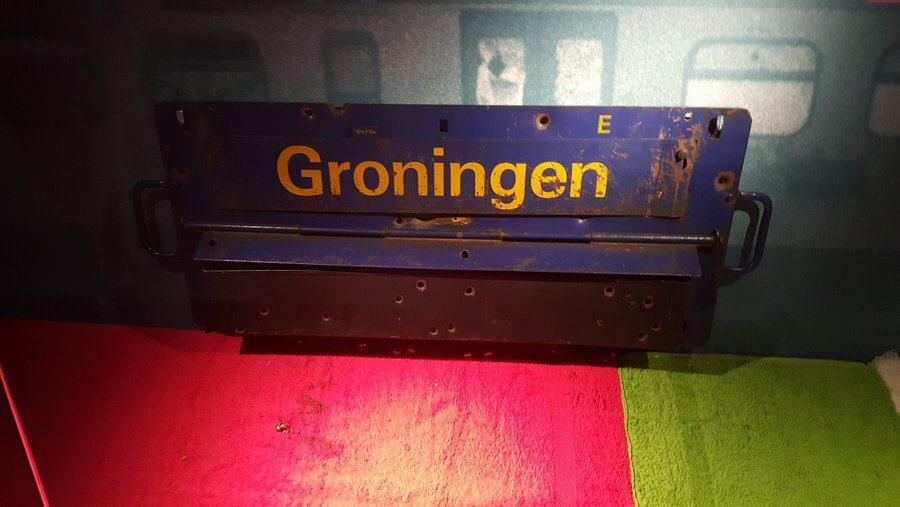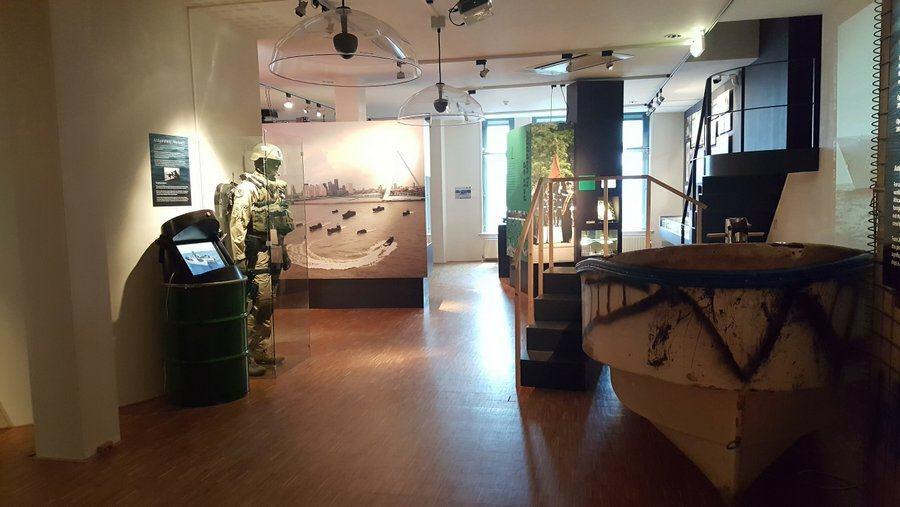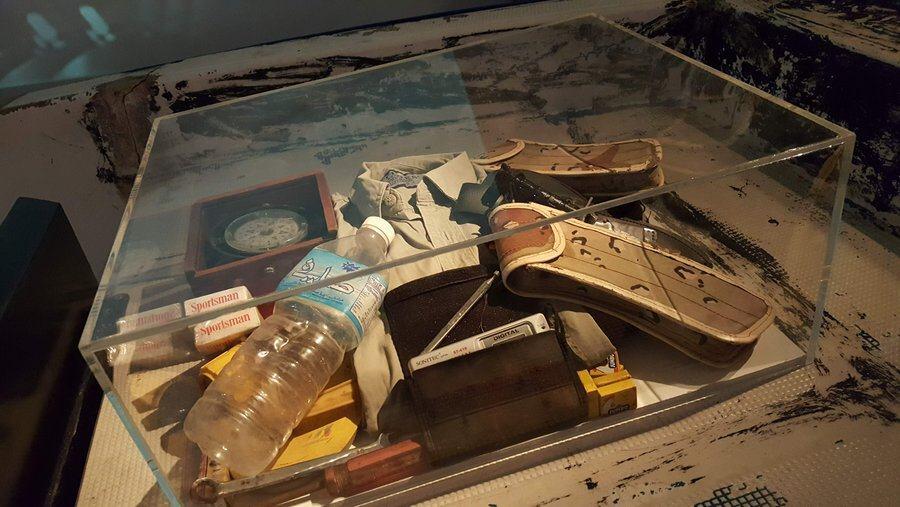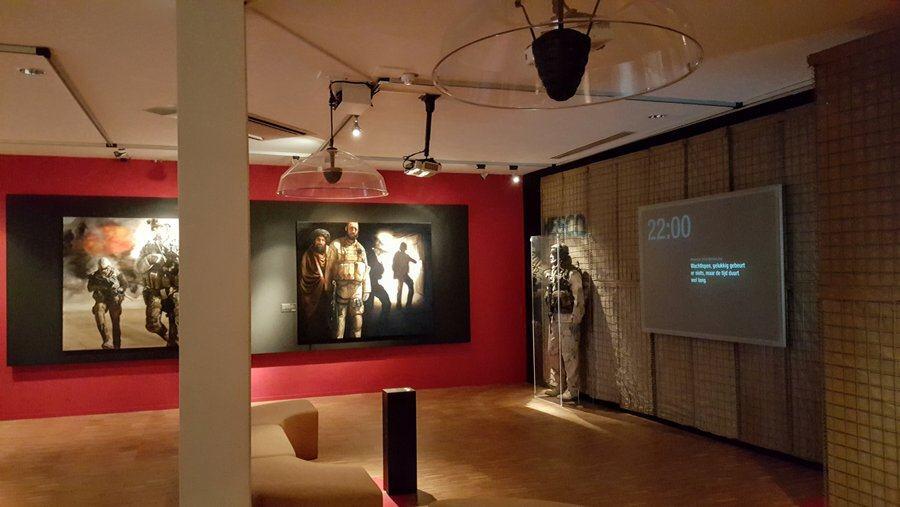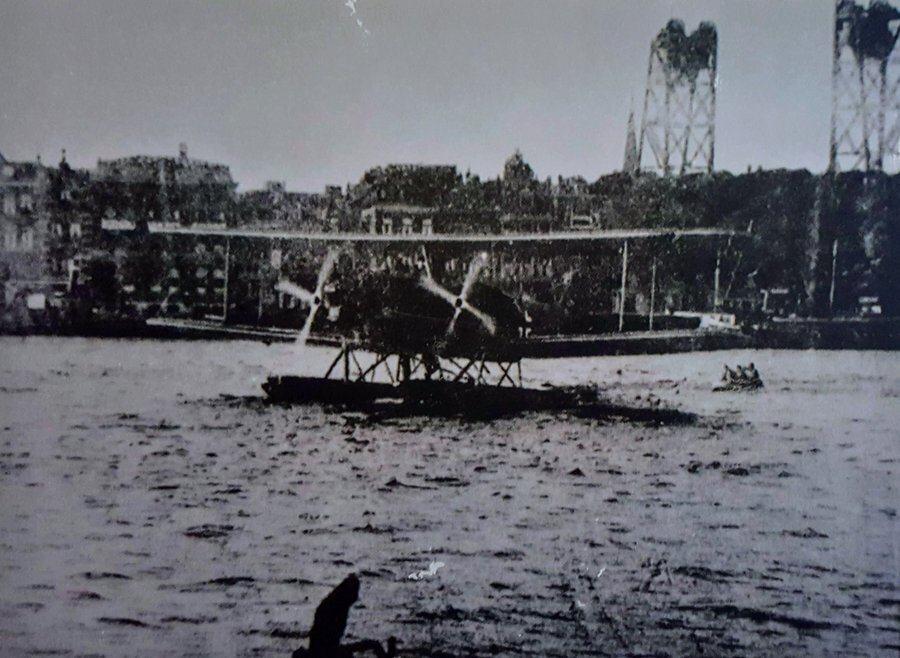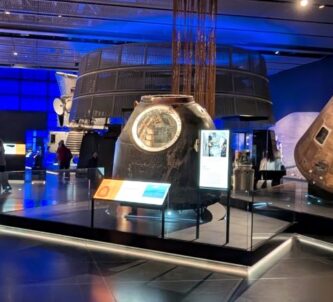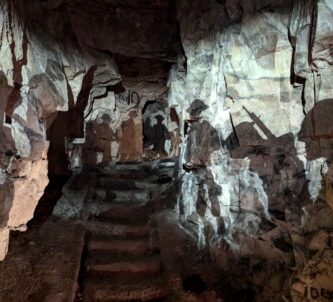The home of the Netherlands Mariniers (‘Marines’) has always been Rotterdam, so no surprise that the corps’ museum should be in the historic heart of the city.
It hasn’t there long. The first attempt to create a collection of historic Mariniers artifacts was at their barracks on the Oostplein in Rotterdam in 1939. Unfortunately the collection was lost a year later in a Luftwaffe bombing raid. The initiative was launched again in 1980 and in 1995 the collection was housed in its current location; four 18th century merchants’ houses rebuilt on Wijnhaven, the symbolic site of the Mariniers stubborn defense of Rotterdam against the German invasion in May 1940.
How long was the historic legacy they sought to preserve? Well, the United Provinces of the Netherlands had used ordinary soldiers on board ships during the ‘Eighty Years War’ (1568–1648) with Spain, but the story of the Dutch Marines starts with one of England’s less-often spoken about military debacles – the Dutch Raid on the Medway.
The famous (famous in Europe, hardly known in the UK) Dutch Admiral, Michiel de Ruyter* was a maritime super hero. It was he who regularly humiliated the enemies of the United Provinces of the Netherlands. In June 1667 he led a large fleet into the Thames and up the River Medway to attack the English fleet, which was mostly laid up and under-manned, at Chatham dockyard. It was the first engagement for the specialist ‘Regiment de Marine ‘ which he and the Prime Minister of the new Dutch Republic, Johan de Witt, had founded just 19 months earlier, and it was a great success.

The Mariniers Museum tells the story of the Dutch Marines from that moment, over two floors of the small 4-storey building. The top (3rd) floor covers the history, but it is backed up on the second floor, which focuses on the corps’ more recent roles in 20th century. The first floor has a mini assault course & jungle where kids can play at being a marine, and the ground floor is the ticket office and shop.
Top Floor
It’s best to start here, and with the short film (with English subtitles) that gives an overview of the corp’s history and current role. Then there is a chronological display around the walls. I spent quite a lot of time here, studying the history in detail, because what began to fascinate me was the range of geographic deployments – the Dutch Marines have been active all over the globe!
In 1704 they are storming Gibraltar with the British Royal Marines (The 16th – 18th centuries were a blur of changing alliances in Europe!) and fighting other battles on the Iberian peninsula. Then half a century later they are being deployed to the Caribbean (St Eustatius) and by 1823 to Sumatra (Palembang), Java in 1825, then Japan (Shimonoseki) in 1864, back to Sumatra for the Aceh War 1873–1904, and a return to the Caribbean in 1929 to fend off Venezuelan designs on Curaçau and the Dutch Antilles.
With so much having been lost in the WW2 bombing, the museum doesn’t have many artifacts to show for this period (compare & contrast with, say, the Rifles Berkshire & Wiltshire regimental museum in Salisbury), but they make clever use of the few paintings, drawings, documents and personal items they do have. I particularly like a rather mangled sword left by Lieutenant Van Speijk when, in February 1831, he heroically sacrificed himself by blowing up his own gunboat in Antwerp rather than let it fall into enemy (Belgian) hands.
World War II finds the Mariniers fighting on two fronts, at home against the Germans and in East Java against the Japanese. After this, the artifacts on display begin to take the form of uniforms and equipment, photographs and documentary film, including the Mariniers most famous action in recent times; the dramatic ending of the 1977 train hijacking by South Moluccans, and more recently their actions retaking a ship from Somali Pirates in 2010.
Second Floor
The second floor feels more introspective. There’s an area covering the Mariniers deployments in Iraq and Afghanistan as part of the international coalition. It’s an experiential zone with overhead audio reflectors beaming down the voices of Dutch marines talking (in Dutch) about their experiences as you watch video of them on patrol.
Nearby they have a captured Somali pirate skiff on display with some of the meagre supplies and items found with it.
And then the displays focus on the Mariniers links with Rotterdam and their defence of it in May 1940. One rather bedraggled but significant artifact on display is one of the rubber dinghies deployed with German troops from seaplanes that landed in the River Maas during that initial attack on Rotterdam.
The problem with the second floor is that the English translation signage becomes rare, so it makes it difficult to understand what you are seeing. The same is true with the audio in the Afghanistan section. The museum know this and it is on their list of improvements when they have budget. That said I really enjoyed my visit and suggest you take a look if you are visiting Rotterdam.
Declaration: I was in Rotterdam for a social travel conference. I was given complimentary press access to the museum.
*Very interesting. There was a movie made about De Ruyter in 2014 – The Admiral. It’s a good movie. I’ll put it in the ‘Stuff’ section of ‘Books & Stuff’. Maybe for English sensibilities, or box office draw, the poster/cover for the UK release features Charles Dance as King Charles II of England standing prominently in front of the film’s actual subject, Michael de Ruyter played by Frank Lammers! In the International version, Charles Dance doesn’t feature at all!
Factbox
Website:
The Mariniers Museum is one of four Dutch military museums in the Defense Museums Foundation. The others are…
- National Military Museum – combines the collection of the former Army Museum at Delft with the Air Force Museum at Soesterberg air base.
- Marechausee Museum – The Marechausee are the gendarmerie force performing military police and civil police duties. The museum is in Buren. (Unfortunately they’ve now ditched the English language version of their website)
- Marine Museum – Dutch Navy museum in Den Helder.
Getting there:
Wijnhaven 11, 3011 WH, Rotterdam.
Easy to get to, and easy to find. It is close to (on the river side of) the famous yellow ‘Cube Houses’. Catch a tram or tube to Rotterdam Blaak station and walk southeast.
Price:
Adult: €6,00
Child: €3,00 (ages 4 – 12)
Under 4s: free
Opening Hours:
Tuesday – Friday, 10.00 am – 5.00pm
Weekend (Sat-Sun), 11.00am – 5.00pm
Monday – Open only in school holidays
Closed on: Christmas Day – New Year’s Day – Easter – April 27th (the King’s birthday) – Ascension Day


